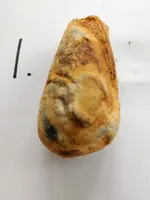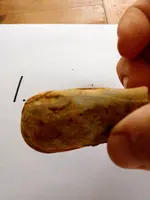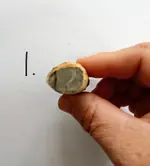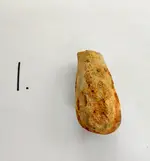Chert comes in all shades of grey from almost white to almost black, all shades of brown from light tan through to rusty red, and occasionally green. The colour is simply a function of impurities in the silica. When chert nodules have a weathering rind it’s usually paler in colour than the exterior and may have brownish streaks from iron-staining. Although the pictures aren’t great, that’s what I see here with no evidence of modification by man, nor any ‘carving’.
Small chert nodules can have enigmatic shapes because they often form in cavities in their host sediments that were once occupied by something biological… such as sponges, clumps of algal growth, molluscs, and mud-burrowing critters.
I see nothing which is characteristic of bone or ivory.







